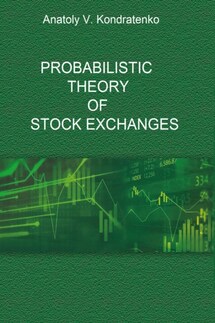Probabilistic Economic Theory - страница 3
In this book, the fundamental concepts of economic theory are exposed to critical rethinking for the purpose of answering such eternal questions of economic theory such as those regarding supply and demand, as well as market price and market force, market process and market equilibrium, invisible hand of market etc. I look at how all these concepts should be incorporated into economic theory and conveyed quantitatively in the same language in which physicists, chemists and other professionals in the so-called natural sciences present their theories, i.e., in the language of mathematics. In the book I presented maximally simplified models, in which only the most important special features and details of work of markets are described by means of maximally simplified mathematical apparatus. Let us stress here that the main aim of such basic models is only to reveal the essence of the studied phenomenon, not more. After this is accomplished, we can then develop the models further, including other, more sophisticated effects within them. This is the only true way of modeling science. Therefore, Chapters I–VIII are easily understood by first-year economics students. But the subsequent Chapters IX and X require an existing, thorough knowledge of physics, somewhere around the level of upper year physics courses. They only need have the slightest grasp of economic phenomena and laws of human action in the market economy, obtained, for example, in the course of reading the first chapters of this book. Generally, this book can be considered as an introduction into economics, written for physicists in standard physics terminology. The book, by the way, was initially taught as a set of lectures on economics for physics department students. If, after reading this book, a physics student has the impression that the presented physical economic models are quite simple and understandable, then I have solved a personal challenge. Indeed, I feel that the more complex the studied systems are and the phenomena within them, the simpler the model must be, taking into consideration only those effects which are of prime importance for describing the studied phenomena.
The book, as noted above, is the collection of lectures, each of which is called to answer one or several questions given above. The genre of lecture (or essay) is selected for the purpose of concentrating on the compact, clear presentation of physical economics. In it I have used a whole series of new ideas, concepts and notions for the economic theory, which arise from theoretical physics. I believe I have succeeded in avoiding the necessity of making numerous surveys and references, the like of which can be found in most other textbooks on economics and economic history. Therefore, references in the book are made only to those sources which were actually used for the fulfillment of studies, the development of models, and writing of the book. To provide convenience to students in lectures, figures and fragments of the text are reproduced several times in some chapters.
It should be emphasized once more that I borrowed ideas, concepts and notions from physics, many of which are completely consistent with the discoveries of the classical economic theories of the 19th century, the first of which being the subjective theory of value. This concerns first and foremost such important milestones in the development of classical economic theory as [5]:







